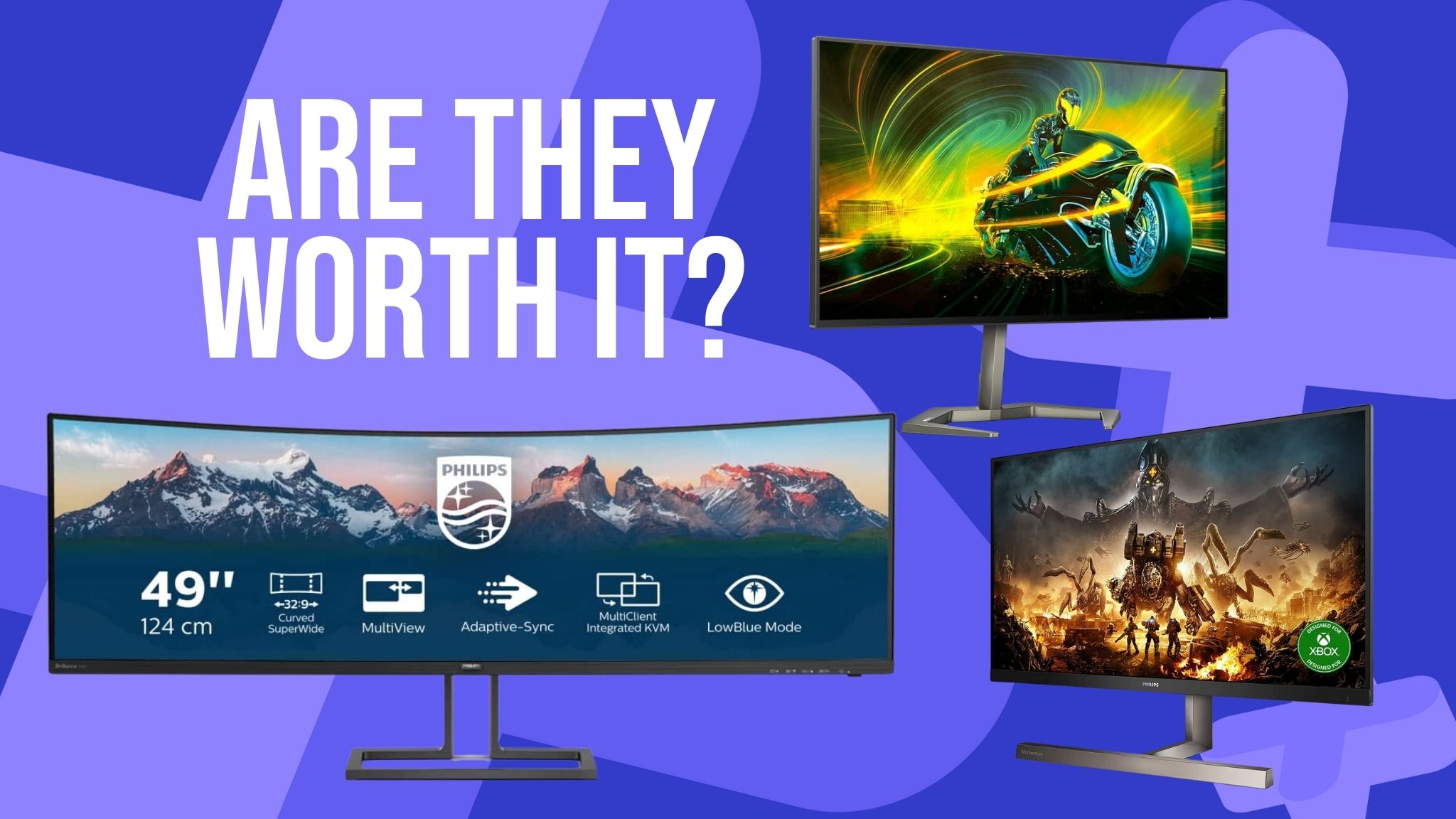
If you're in the market for a new gaming monitor, you might be asking yourself if Philips is the brand to go for. When you think of the biggest manufacturers, Philips might not be the first that comes to mind. It's a highly competitive market, with ASUS, BenQ, and Samsung all going toe to toe. Although Philips has been making monitors for years, it's better known for its slew of other tech. After switching to a Philips gaming monitor about five months ago though, I think there's a case to be made for good old Phil as one of the most underrated brands on the scene.
Of course, when it comes to choosing one of the best gaming monitors, you have to take a whole lot into account. What resolution will you need? What size? Is there a type of panel you'd prefer? Buying a gaming monitor can be quite an investment, too, so we don't blame you for wanting to know a bit more about each brand. Philips has a fairly extensive range that might surprise you, and just like a lot of monitor manufacturers in the last year, it has some great choices for dual setups that'll work with one of the best gaming PCs and a next-gen console. Of the Philips monitors that we've reviewed, we'd be fairly confident that there's one out there that could slot right into your setup.
Down below, I've listed the three main reasons why I think of Philips as an underdog in the monitor market these days, and fittingly, they all start with the letter P.
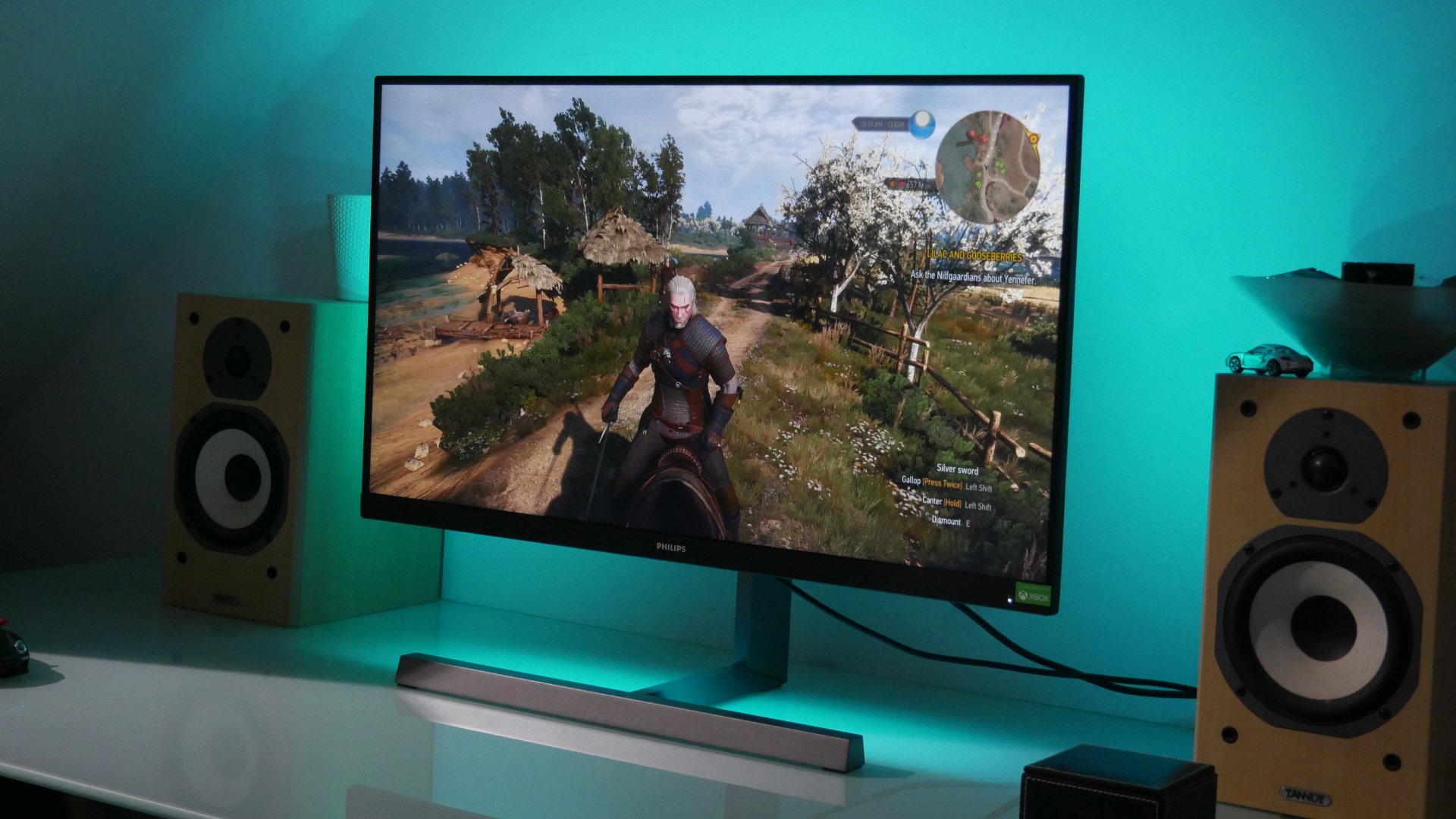
Panels
Particularly in its latest high-resolution releases, Philips gaming monitors have adopted Nano IPS technology. Essentially, this is an improved version of an IPS panel that is the OLED equivalent for this type of display. It allows for blisteringly fast response times and allows for a lot more colour accuracy. This explains why a lot of Philips's 4K monitors earn decent HDR ratings.
OLED panels make each pixel self-emitting without the use of a backlight. While Nano IPS isn't exactly the same, it applies nano-particles to the backlight and the results are pretty darn close. The Momentum 5000 27M1F5800 I currently use as my main display uses one of these Nano IPS panels, and it's genuinely one of the best gaming displays I've come across.
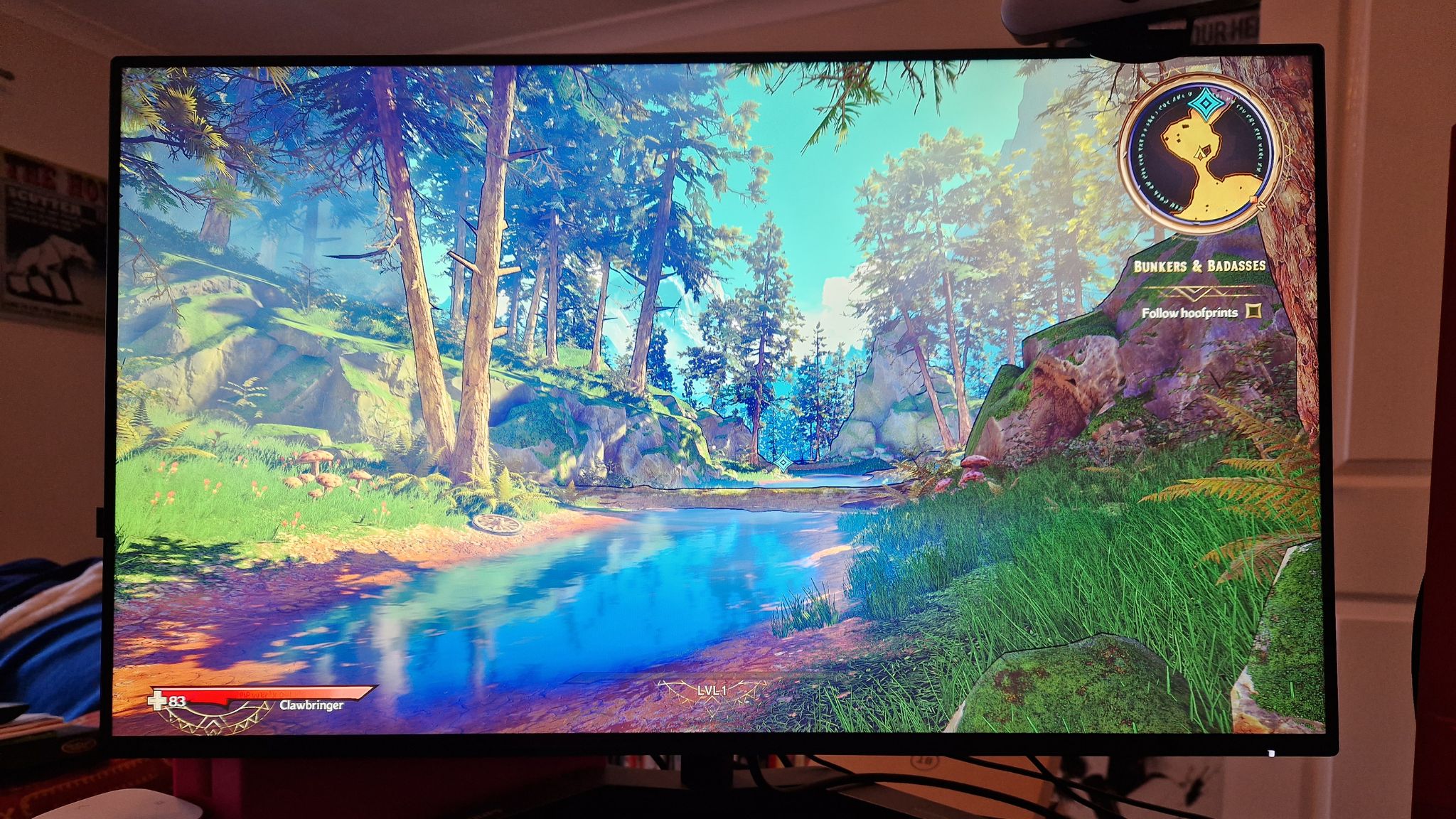
If you take a look at its wares, Philips gaming monitors seldom have a slower refresh rate than 144Hz, which is our cut-off for the best high refresh rate monitors. In fact, you're hard-pressed to find a monitor that doesn't have a 1ms response time in the Philips catalog. Of course, any gaming monitor in this day and age would be out of sorts without some kind of FreeSync, G-Sync, or Adaptive-Sync compatibility. With Philips, you'll definitely get one, if not two of these on board. Any of these will enhance your game's visuals to decrease screen tearing and will generally add up to a smoother gaming experience.
Practicality
It can be hard to find the right monitor for you. As I mentioned, you need to think about size, resolution, panel type, curve, the stand, and if it will fit on one of the best gaming desks.
There are a lot of ifs to consider, but looking at its selection of monitors, Philips has some conclusive options, both in size and resolution. There are 32-inch gaming monitors, there are 27-inch monitors, and for the most part, the stands and angular feet on them aren't too greedy in terms of desk space.
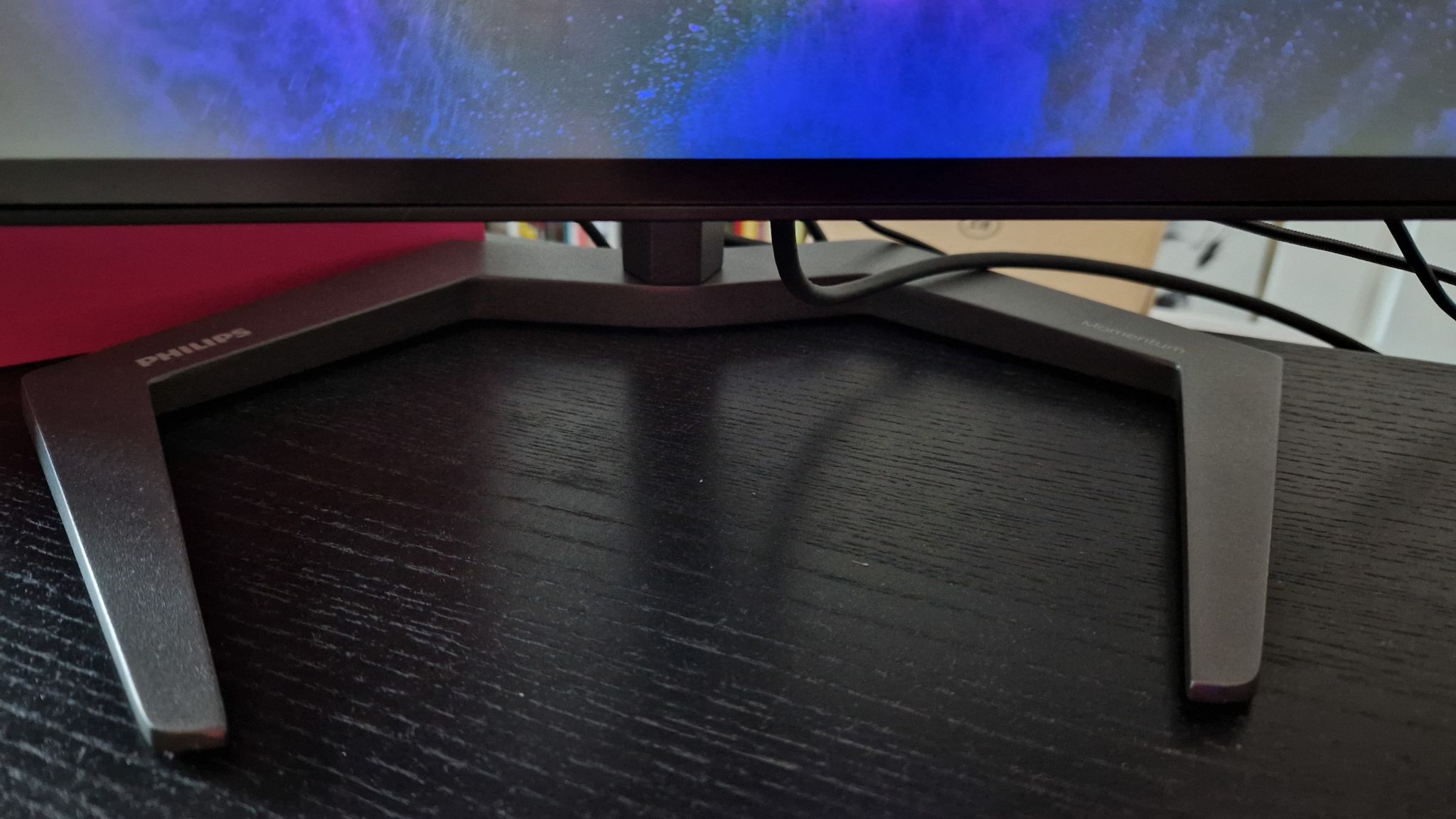
Speaking of range, Philips even has some ultra-wide, portable, and curved monitor offerings too. If you're thinking about an ultra-wide or curved monitor, Samsung is probably the best brand to go for, all things considered. Nevertheless, the fact Philips has this range is impressive.
One thing I admire is the fact that Philips gaming monitors thread the needle in terms of something that looks professional, while also being immediately recognizable as a "gaming" monitor. If you're so inclined, the Momentum 329M1RV we reviewed even has a nice Philips Ambiglow feature that exudes RGB lighting from the monitor's back. It can even mimic the colours shown on the screen, which is usually something that's reserved for the best gaming TVs.
Of course, a gaming monitor isn't practical if it can't connect to the rest of your setup, but as standard, Philips gaming monitors tend to have 2 HDMI 2.1 Ports, and 2 DisplayPort 2.1 docks. Also commonly found is a USB upstream port, 3.5mm audio jack, and more than 2 USB bays. More contemporary models can also be found with USB-C ports as well, which is very handy if you want to pair a monitor with one of the best gaming laptops and a USB-C hub.
Dual setups that include a console and PC have been very appealing to gamers in the last few years, and Philips has absolutely been wise to that. Overall, its monitors are a practical choice for any setup, no matter the platform you play on.
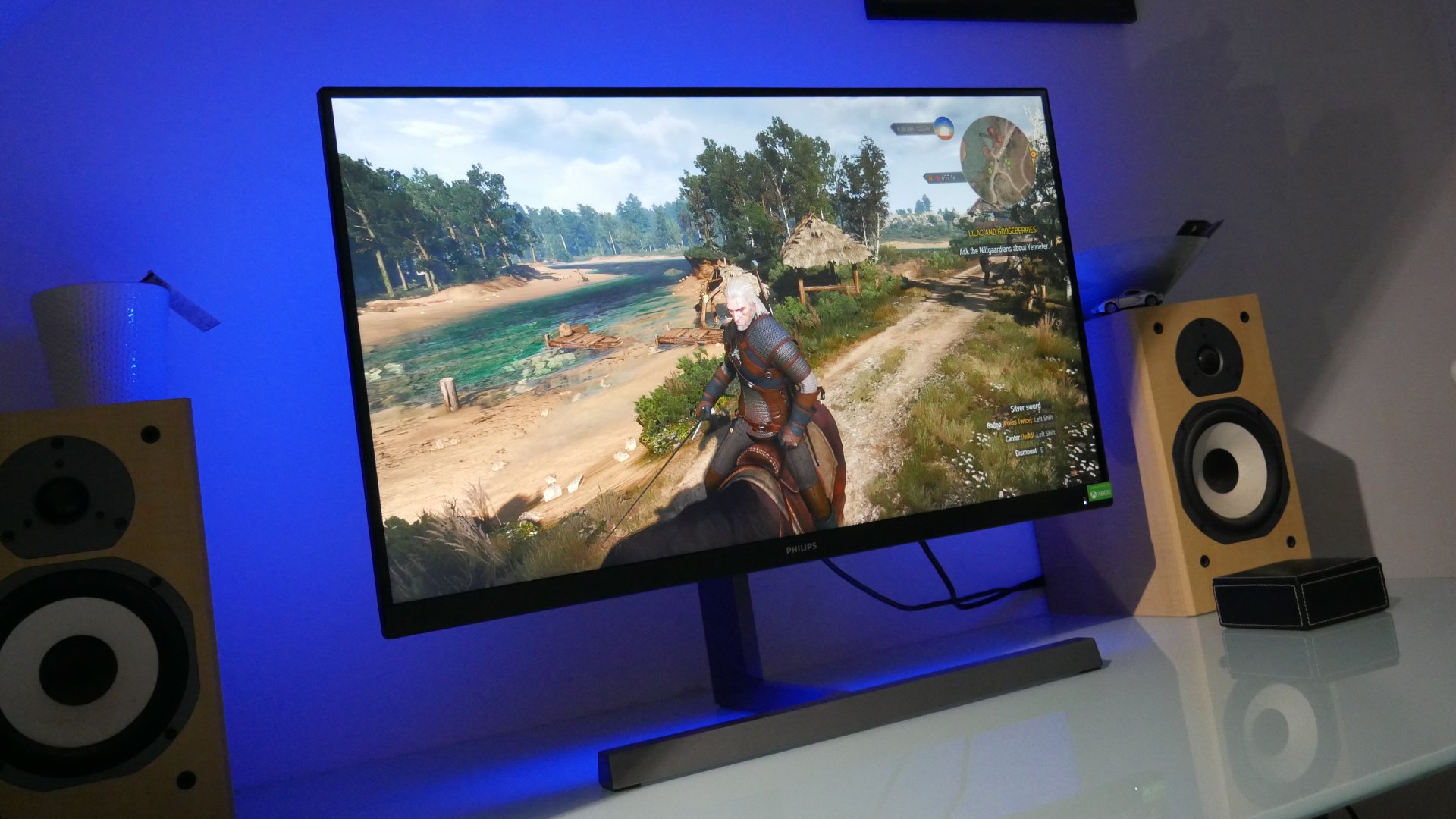
Price
Philips is a big name in a lot of markets, but since it isn't one of the most typical gaming monitor brands, you may be surprised to find some higher-end models at lower prices than the competition.
Now don't get me wrong, you pay for what you're getting with this brand. If you want a 4K, high refresh rate screen, it's not going to be cheap. But compared to other brands on the market, I'd say the prices you see with Philips are very reasonable. This is especially true with 1080p monitors.
For example, take the 4K, 27-inch, Nano-IPS, Momentum 5000 I'm currently using. It's ~$750 in the US and £700 in the UK. For an equivalent monitor from a brand like ASUS, for example, you'd need to spend at least £100 more in the UK. The Asus ROG STRIX XG27UQ, our current top pick in the 4K gaming monitor arena, which has almost identical specs, is $930 and £900 in the UK.
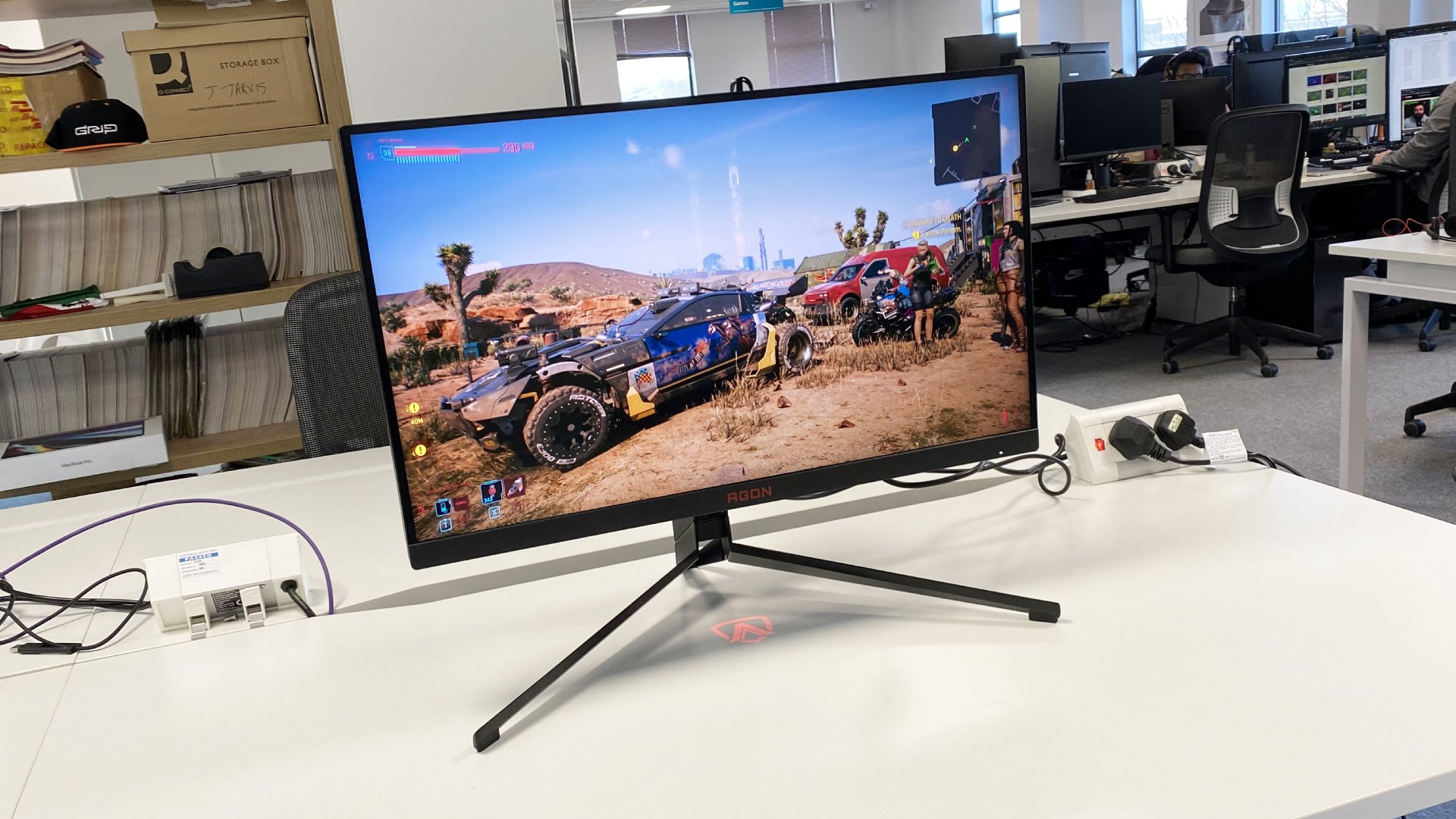
Similarly, an AOC AGON PRO PD32M will set you back well over a grand compared to the $900 / £916 an equivalent 32-inch Momentum 329M1RV will cost you from Philips. In terms of value for money, then, Philips gaming monitors are hard to beat and are up there with brands like BenQ for offering truly great displays at fairly reasonable price points.
Down below, we've used our price comparison software to bring you the best prices in your area for Philips gaming monitors to give you a better idea of how much you usually need to fork out for one.
To sum up...
Philips has a really wide range of gaming monitors to suit every player's needs. Although it's hardly unknown in the market, I'd argue it's underrated in terms of its gaming-specific reputation. If you're on the hunt for a new gaming display for your gaming PC or console, don't count out your uncle Phil, he might be able to offer you competitive specs at great prices.
Want a more specific monitor recommendation? Take a look at the best portable monitors, the best monitor for PS5, and the best G-sync compatible monitor.







